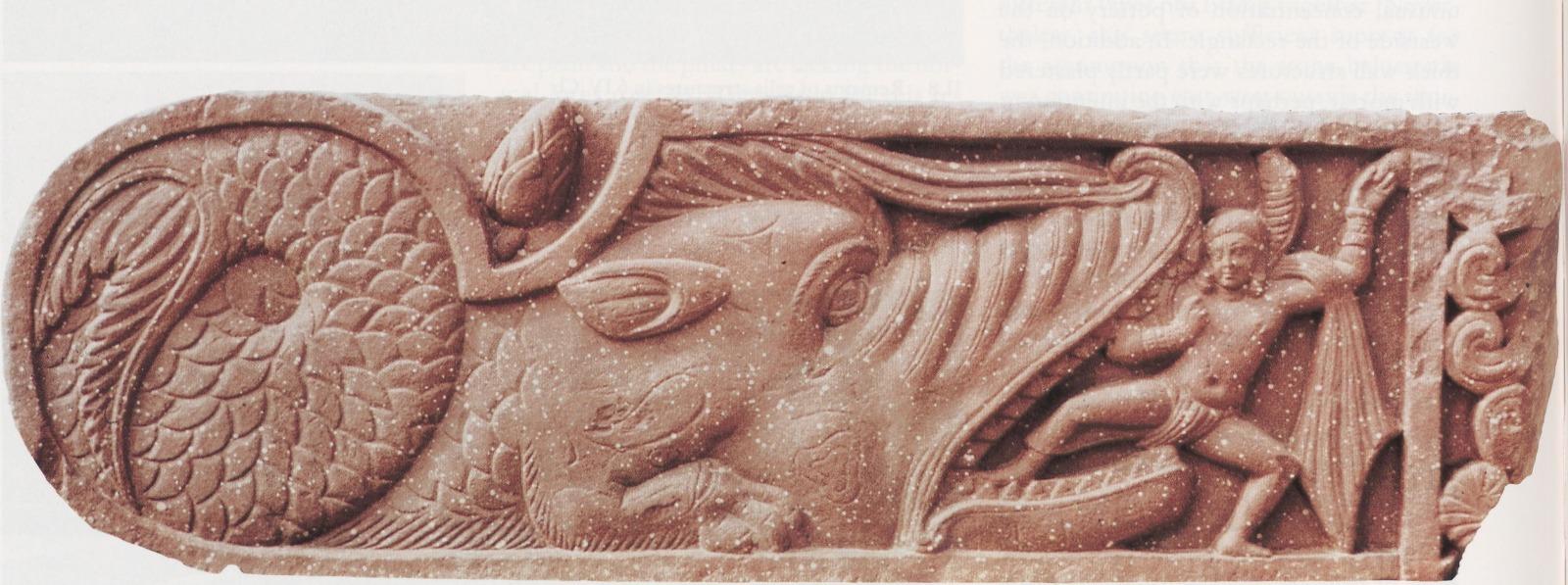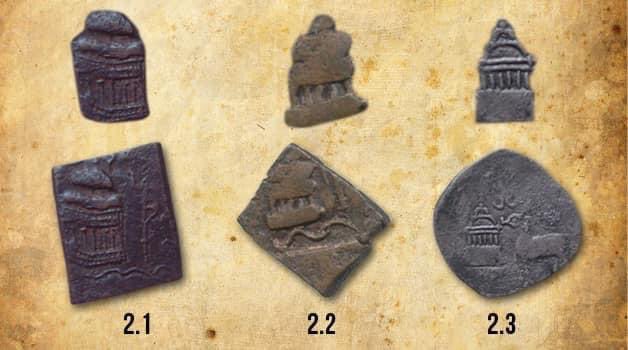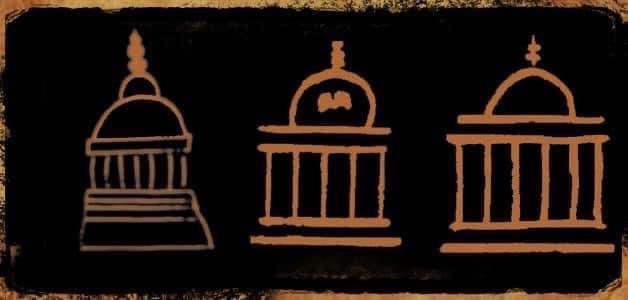
views
A favourite narrative of the left scholars that keeps appearing regularly in media is the claim that “there were no Hindu temples before the 5th century CE.” This claim is nothing but a myth, and the propaganda is primarily aimed at postulating that most pre-Gupta temple structural ruins were Buddhist in nature, and Hinduism, Hindu gods/murtis, and Hindu temples are a later development, with the concept of Hinduism and Hindu gods starting from around the Kushana period. This fake narrative has been force-fed to the Indians through constant repetitions of the claim in academia (school and college textbooks) and the publishing of articles/columns on this topic in various journals and media platforms written by so-called scholars.
Unfortunately, many gullible Indians growing up to this constant brainwashing believe this fake/ mythical claim, thinking Hindus did not have any temples as such before the Gupta period. Recently, in an article, a slightly modified claim was made that large Hindu temples did not exist before the 5th century CE. From “no Hindu temples before 5th century CE” to “no large Hindu temples before 5th century CE,” the shift in narrative is noteworthy.
The standards of civilisation are often measured, among other things, by the then available scientific planning, longevity of structures built, aesthetic appeal, and successful completion of buildings that range from religious to military to residential structures. Seeing the antiquity and the advanced nature of Indian civilisation, it is not surprising to find Indian writers from ancient times quite taken up with the subject of architecture, and this obsession is evident in all forms of literature ranging from the Vedas to the Epics, Puranas, Buddhist texts, Jain texts, Agamic literature, various historical and even political treatises. With such a vast spectrum of knowledge compiled in books, and India being a country that has always been deeply religious, it is completely illogical to think ancient Indian civilisation would have no Hindu temples.
This article will take a look at the various evidences that clearly show Hindu temples existed in ancient times and did not start from the 5th century CE, as Marxist scholars have always claimed.
Evidence from texts
Texts from ancient India help us to understand the nature of the worship of gods in India and the temples built for them. In the Astadhyayi (around the 4th century BCE), Panini gives names of Vedic deities, such as Agni, Indra, Varuna, Bhava, Sarva, Rudra, Mrda, Aryama, Tvasta, Súrya, Sóma, Indrani, Varunáni, Agnayi, Usha, Prthivi etc, who were worshipped. Bhakti or theistic form of devotion was present in Panini’s time, which is clear by his reference to devotion to Vasudeva and Arjuna, while names like Varunadatta and Aryamadatta indicate sons were named after gods like Varuna and Aryamá, to show devotion.
Panini also mentioned the use of images for worship (arcas), which indicate the existence of shrines where these arcas were worshipped.
Patanjali’s Mahabhasya (2nd century BCE), which is a detailed commentary on Panini’s work, mentions the worship of Vasudeva-Krishna as a deity; and specifically mentions temples of Dhanapati (Kubera), Rama (Balarama), and Kesava (Vasudeva), where worship would occur with various elaborate rituals, accompanied by music and dance. From around the same time, there have been found murtis of Kupiro yakho (Kubera yaksa) from Bharhut, and of Balarama from Mathura. A murti with the inscription of four-armed Vasudeva-Visnu carrying gada and chakra in his upper hand and holding a sankha (broken) in the lower hand, from Malhar (Bilaspur in Madhya Pradesh), is dated to the 2nd century BCE. These murtis would all be worshipped in temples of their own.
Kautilya’s Arthasastra refers to various temples within a fortified city that enshrined Shiva, Vaisravana, Asvinikumãras, Sri (Laksmi), and Madeira (a fertility goddess associated with the sect of Mother Goddess). The Arthasastra mentions images of Aparajita (Durgã), Apratihata (Visnu), and Jayanta (Kumãra), which were worshipped by King Bhagabhadra (131 BCE, the fifth Sunga ruler); and Vaishnava shrines erected by Gautamiputra Bhagavata, the ninth Sunga ruler, in his 12th year.
Evidence from inscriptions
Three inscriptions from Nagar (Chittorgarh, Rajasthan), refer to the construction of a stone wall that enclosed a place for worship of Sankarsana and Väsudēva by King Sarvatata of the Kanva dynasty (250-300 BCE). The Nanaghat (Pune) inscription of Naganika of the 1st century BCE refers to Vedic sacrifices by the Satavahana royal family and starts with homages to divinities such as Dharma, Indra, Sankarsana-Vasudeva, Chandra-Surya, and the Lokapalas (Yama, Varuna, Kubera, and Vásava). An inscription from Mora (Mathura) during the reign of Mahaksatrapa Sodasa (10-25 CE) records the installation of murtis of the five Vrsni heroes in a stone temple. Another Mathura inscription of the same time, found engraved on a doorjamb, records the construction of a temple with torana and vedika for Vasudeva.
An inscription from Nandsa (Udaipur, Rajasthan, 226 CE), records the performance of Vedic sacrifices after the construction of temples dedicated to Brahmá, Indra, Prajapati, and Visnu.
Structural Evidence from Mauryan Periods
From the time of Ashoka Maurya (272-232 BCE) to the early Kusana period, various pieces of evidence from rock-cut shrines and from surviving foundations of temples suggest that in those times, temples were built in circular (vitta), elliptical (vettäyata), and apsidal (capakara) forms. The Ajivika caves at Barabar (Gaya, Bihar) of Mauryan times, preserve both circular and elliptical shrines in hut forms with domed or vaulted roofs.
Belonging to the Mauryan period is a circular brick-and-timber shrine (plinth) of the 3rd century BCE, located at Bairat (Jaipur). Temple no. 40 at Sanci was originally an apsidal stone temple of the Mauryan period, raised on a high rectangular plinth, the superstructure likely built of wood that no longer exists.
Structural forms prevalent during the Mauryan period continued into later periods, as found recorded in many bas-reliefs from Sanchi, Mathura, Amaravati, etc. The apsidal plan for temples was more popular than the circular or elliptical plan during this period. Three stone apsidal shrines from the 1st century CE are known from Taxila (Takshasila), while Temple no. 18 at Sanchi was also an apsidal shrine, datable to the 2nd century BCE.
Remains of temples from pre-Shunga- to Shunga era: Archaeological evidence
The apsidal temple at Sonkh (Mathura, dated 1st century BCE) was one of such early temples. The Ghosundi inscription (1st century BCE, near Chittorgarh) talks of a temple complex named Narayana-vatika dedicated to Samkarshana-Vāsudeva; foundations of an elliptical structure, dated 2nd century BCE, found at the site of Besnagar in Vidisha is that of a Vaishnava temple; an identical structure discovered at Nagar (Chittorgarh) by Bhandarkar is dated to 350-300 BCE; while the Mora well inscription (1st century CE) refers to a temple in Mathura.
Hindu temple architecture from the post-Mauryan era is known from the remains of the temple foundations, pertaining to their ground plans, found during various archaeological excavations. Unfortunately, the superstructures of these ancient temples were not preserved, because they would often be built of wood or bricks.
One such example of a temple from ancient India is the Vasudeva shrine from the 3rd century BCE (approximately dated 200 BCE), found close to the Heliodorus pillar in Besnagar, near Vidisha, Madhya Pradesh. From a study of the archaeological report of the excavation of this site by D.R. Bhandarkar (ASI- Annual Report 1913-14), it is very clear the temple which belonged to the Sunga period was by no means a small one. In fact, the word prasadottoma was found in an inscription on a pillar stump from the site, meaning the temple was the best among the ones in Vidisha, clearly indicating the Heliodorus Garuda pillar was built in front of the most celebrated temple of Vasudeva of that time. Thus, we find archaeological evidence of a large Hindu temple from the 3rd-2nd century BCE.
Another example of a Hindu temple from ancient India is the Vasudeva-Sankarshana temple found in Nagari, Rajasthan. Here, a stone enclosure for a Vasudeva-Sankarshana shrine is mentioned in an inscription which belonged to 300-250 BCE. The site preserves a massive stone enclosure and the plinth of an elliptical brick temple. Below the surface level of this stone enclosure, archaeologists found the remains of an earlier building that dated to 350-300 BCE. The Vasudeva-Sankarsana shrine structure was elliptical in shape with a puja-sila-prakara built around it, and only the lower moulding of the superstructure had survived which was 2 feet high, showing the temple was a large one. The shrine remained an active place for Vaishnava worship until the 7th century CE.
A series of apsidal temples from ancient India were excavated at Sonkh, dating to the 1st century BCE. The apsidal Temple No. 2 at Sonkh had a large stone railing surrounding the shrine that had engravings on both sides. On the southern side of the railing, carved ruins of a stone entrance were found that had two pillars supporting a superstructure of three architraves with voluted ends. An architectural piece from the bottom lintel of the doorway showed carvings depicting a naga and a nagin sitting on thrones, surrounded by attendants and devotees, thus denoting the temple as a Naga shrine.



Numismatic evidence of Hindu temples in 200 BCE
Numismatically speaking, ancient Hindu temple architecture was found depicted on coins and coin moulds marked by the Yaudheyas. The Yaudheyas were a martial republican clan, who were at the peak of their power between 200 BCE to 400 CE, in areas of what is now Haryana, Punjab, and Rajasthan. Being a martial clan, most of the Yaudheya coins depicted the war-god Karttikeya (Brahmanyadeva). Among the many temples seen on Yaudheya coins, one structure with a dome-shaped roof and square plan stands out (1st one in second image). It stood on an elevated adhishthana, consisting of four mouldings. The object of worship would have stood in the centre. Double domes were a popular design at that time, as evident from the many coins depicting them (shown in the images), while there are examples of even triple-domed temples. The third image clearly shows a Shiva temple with the Shiva linga at the centre of the sanctum. The existence of Shaiva shrines is confirmed by a four-pillared double-domed structure surmounted by a trident, which is the established emblem of Shiva. The Trident on top of a four-pillared double-domed structure also confirms the Shaivite affiliation of such shrines.
Sometimes temples on Yaudheya coins show a dome marked by vertical divisions, which indicate wooden beams on the sanctum roof. A double or triple-domed structure having a square plan shows that the domes would have been covered by slanting slabs giving the sikhara a triangular look. One Yaudheya coin also depicts a structure topped with a vajra-like motif, clearly indicating a shrine dedicated to Indra Deva.



Thus, from the above-presented evidence (texts, archaeological, and numismatics), it is quite clear that Hindu temples were indeed present much before the 5th century CE, and they were often large shrines dedicated to various gods.
The author is a well-known travel and heritage writer. Views expressed in the above piece are personal and solely that of the author. They do not necessarily reflect News18’s views.



















Comments
0 comment